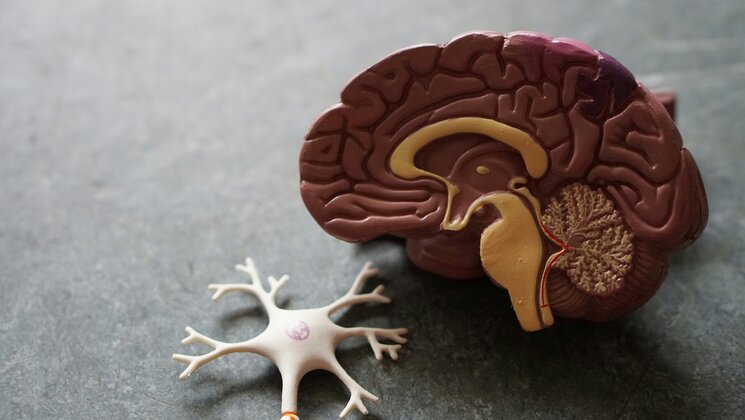New applied research projects solve the key issues of life

Three thematic research and development program projects at our institute, funded for five years, will develop innovative antimicrobial surface coatings, biocontrol agents to reduce chemical pesticides in plant disease management, and will help determine the origin, composition, and safety of food using DNA analysis.
The projects are financed by thematic research and development programme under the Estonian Research Council. Most of the financies come from the European Union structural funds. The aim of the thematic R&D programmes is to foster business-oriented R&D capacity, cooperation between research institutions, business and public sector partners for knowledge and technology transfer, and growth of young R&D specialists in smart specialization focus areas. The research topics are broad and seek solutions to big problems like prevention of the spread of infectious diseases, biocontrol, and clean food.
Below we provide a short overview of the three projects.
Antimicrobial synergy-driven surface coatings - innovative solutions in healthcare environment
Applicant: National Institute of Chemical Physics and Biophysics
Partner: University of Tartu (Institute of Physics, Institute of Molecular and Cell Biology, Professor of Genetics Angela Ivask)
Business partners: biomedical companies Nanordica Medical OÜ (Estonia) and AFFIX Labs OY (Findland), furniture company 4WAY OÜ (Estonia)
Duration: 01.01.2024 – 31.12.2028
The aim of the project is to develop innovative antimicrobial surface coatings to curb the spread of microbial infections in the healthcare sector. To achieve this, antimicrobial coating materials will be synthesized for surfaces frequently touched by people—furniture, door handles, railings—and their potential use in healthcare will be evaluated.
Antibiotic resistance among microbes is one of the major medical challenges worldwide, causing deaths on a similar scale as cancer. People with weakened immune systems (including the elderly and cancer patients) in care and treatment facilities are particularly at risk. The antimicrobial properties of organic and/or metal-based compounds will be analyzed both individually and in mixtures, searching for synergistic antimicrobial effects.
After assessing the safety of the most effective combinations for humans and the environment, prototype samples will be made for various surfaces (laminate, wood, metal). The usability of the synthesized materials on textiles (wound dressings, bed linen, gowns) and in the food industry (clean surfaces, packaging) will also be studied.
This project is an excellent example of interdisciplinary collaboration between research institutions and companies, involving materials scientists, chemists, physicists, microbiologists, and toxicologists.
Development of biocontrol agents to reduce chemical pesticides in plant disease management
Applicant: Centre of Estonian Rural Research and Knowledge
Partner: University of Tartu (Institute of Molecular and Cell Biology, Professor of Molecular Biology Tiina Tamm)
Duration: 01.04.2024-31.12.2028
Several synthetic pesticides are used in food production to control plant diseases, but their residues have harmful effects on both the environment and human health. The risk to humans can be either acute or chronic, with pesticide residues accumulating in the body over time in the latter case. One potential alternative to the use of pesticides is the biological control of pathogens. The possibilities for using various biocontrol methods in plant protection are being explored worldwide, but a common problem is their limited suitability for different climatic conditions.
The goal of the project is to find new plant protection agents based on biological control as an alternative to chemical pesticides, suitable for use in the Estonian climate and on cereal varieties grown in Estonia. Pathogenic fungi infecting cereals are a problem in Estonia, causing two main diseases: septoria leaf blotch and net blotch. Both infections directly affect the yield and quality of cereals, and without control, can destroy up to 50% of the harvest. The second objective of the project is to develop a biocontrol method based on natural yeasts to reduce the use of synthetic pesticides in the control of septoria leaf blotch in wheat and net blotch in barley.
Surveillance of food safety, origin and composition using DNA sequencing
Applicant: University of Tartu (Institute of Molecular and Cell Biology, Professor of Bioinformatics Maido Remm)
Partners: biomedical companies Celvia CC AS, BioCC OÜ
Duration: 01.04.2024 – 31.12.2028
The aim of the project is to develop appropriate purification methods and computational techniques for isolating DNA found in food, which would enable the precise quantification of food components in food products. Accurate quantification is an aspect that has been challenging, too expensive, or otherwise impractical for other DNA-based methods. Therefore, it is expected that the project will develop a methodology for measuring the quantities of different food components. The methodology will be based on the isolation, sequencing, and analysis of DNA found in food, using computational software.
Why is it important to know the exact quantities of different components in food? The technology is predicted to be applied in the following fields:
- Verification of the composition of ready-made food to prevent fraud;
- Monitoring of the food production process;
- Inspection of purchased raw materials.
All living beings are interested in what their food consists of. The composition of food can be studied using a wide variety of methods. One innovative way to analyze food composition is by examining the DNA sequences found in food. One of the advantages of DNA analysis is the ability to provide answers in less than 24 hours, with much of the process being automatable. A DNA-based test is fast, universal, and easily adaptable for detecting new species that affect food quality. Participants in the project have already proven through preliminary tests that DNA is well-preserved in heat-treated food, making reliable analyses possible.
The applications of the project will benefit food producers, importers, and retailers, who will have the opportunity to order DNA analysis services for food. It is also conceivable to certify DNA technologies and implement the service in national regulatory agencies.
Some examples of the technology where the exact quantity of every food component can be measured:
* Authenticity verification for both plant-based and animal-based food products: e.g. the quantity of berries in juice, the exact species of fish in fish products.
* Inspection of purchased raw materials: e.g. in fish industry to inspect the amount of Listeria, checking the content of active ingredients in powdered products.
* In case of innovative foods, including those made from microorganisms, algae, fungi, and insects, the control of the presence or absence of specific components in food, as well as food safety checks (the presence of pathogenic and opportunistic microorganisms).
The first call of the thematic research and development programme was launched by the Estonian Research Council in the autumn of 2023. The call was induced by the Ministry of Science and Education and the programme is supported by the EU Structural Funds. Read more.






